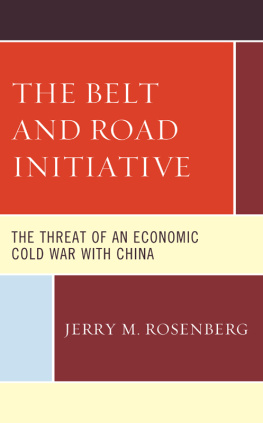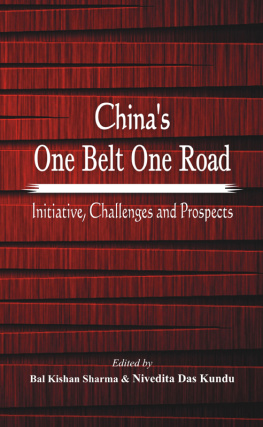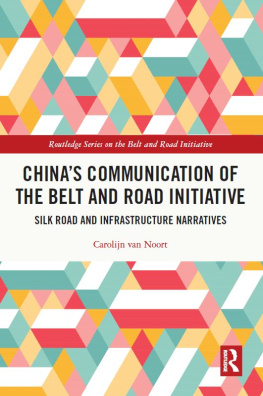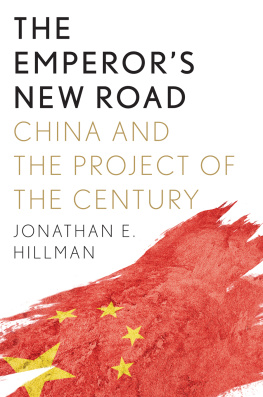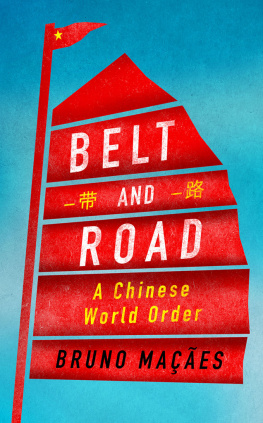Great Potential, Many Pitfalls
Chinas Belt and Road Initiative (BRI), Chinas globe-girdling infrastructure and trade corridor project, is a rare watershed in international affairs. It affects, whether directly or indirectly, nearly the entire world, directly involving more than 60 countries, nearly 4.5 billion people (about two-thirds of the worlds population), up to $8 trillion, and around 40 per cent of the global economy.
BRI also entails a rising powerperhaps the next superpower endeavouring to build one of the biggest and most expensive super-projects the world has ever seen. If it achieves its potential, BRI could even pose a threat to the Bretton Woods global economic model that has prevailed since the end of World War II. BRI has the potential to change the world in a big way. And yet, the project also confronts security and financial challenges that are as serious as its potential is soaring. In this way, BRI is a topic that needs serious examination. This book features chapters on BRI prepared by top international scholars who have been tracking the project closely. The chapters assess the projects impact across Asia, highlight its opportunities and challenges, and consider what might be in store in the future.
The chapters in this book were first published as a special issue of the Asian Affairs.
Bijan Omrani is Editor of the journal Asian Affairs. He is author of several books, articles, and chapters on Afghanistan and Central Asia, amongst other areas. He is an honorary associate research fellow at the University of Exeter, UK.
First published 2022
by Routledge
2 Park Square, Milton Park, Abingdon, Oxon, OX14 4RN
and by Routledge
605 Third Avenue, New York, NY 10158
Routledge is an imprint of the Taylor & Francis Group, an informa business
2022 The Royal Society for Asian Affairs
All rights reserved. No part of this book may be reprinted or reproduced or utilised in any form or by any electronic, mechanical, or other means, now known or hereafter invented, including photocopying and recording, or in any information storage or retrieval system, without permission in writing from the publishers.
Trademark notice: Product or corporate names may be trademarks or registered trademarks, and are used only for identification and explanation without intent to infringe.
British Library Cataloguing-in-Publication Data
A catalogue record for this book is available from the British Library
ISBN13: 978-0-367-51657-4 (hbk)
ISBN13: 978-0-367-51658-1 (pbk)
ISBN13: 978-1-003-05478-8 (ebk)
Typeset in Times New Roman
by codeMantra
Publishers Note
The publisher accepts responsibility for any inconsistencies that may have arisen during the conversion of this book from journal articles to book chapters, namely the inclusion of journal terminology.
Disclaimer
Every effort has been made to contact copyright holders for their permission to reprint material in this book. The publishers would be grateful to hear from any copyright holder who is not here acknowledged and will undertake to rectify any errors or omissions in future editions of this book.
MICHAEL KUGELMAN
Its not often that something like the Belt and Road Initiative (BRI), Chinas globe-girdling infrastructure and trade corridor project, comes rumbling along. Indeed, BRI represents one of those rare watershed developments for international affairs something so big and consequential that few corners of the globe, no matter how remote, can afford to ignore it. And thats because BRI affects, whether directly or indirectly, nearly the entire world.
The scale alone is extraordinary on both statistical and strategic levels.
BRI boasts the potential to involve more than 60 countries, nearly 4.5 billion people (about two thirds of the worlds population), up to $8 trillion, and around 40 per cent of the global economy. Estimates also peg it to be 12 times as large, in absolute dollar terms, as the Marshall Plan.
BRI also entails a rising power perhaps the next superpower endeavouring to build one of the biggest and most expensive super-projects the world has ever seen. If it achieves its potential, BRI could even pose a threat to the Bretton Woods global economic model that has prevailed since the end of World War II one dominated by Western-led financial institutions such as the World Bank and International Monetary Fund. Indeed, BRIs emergence has been accompanied by the establishment of a key new banking institution, the Beijing-based Asian Infrastructure Investment Bank, which counts China as its top contributor.
BRI has the potential to change the world in a big way. And yet, the project also confronts security and financial challenges that are as serious as its potential is soaring. In this regard, BRI is a topic ripe for serious examination.
This issue of Asian Affairs, which marks the second collaboration between the Royal Society of Asian Affairs and the Washington, DC-based Woodrow Wilson Center, features essays on BRI prepared by international researchers who have been tracking the project closely. The essays assess the projects impact to this point across Asia, highlight its opportunities and challenges, and consider what might be in store in the future. These contributions were originally presented at a conference organized by the Royal Society and the Wilson Center, and hosted by Kings College in London, in January 2019.
Multiple rationales, multiple routes
Beijings official motivation for BRI is purely economic: The Chinese government wishes to facilitate greater access to far-flung markets to feed its rapidly growing economy. This entails the robust pursuit of traditional infrastructure development such as roads, rail lines, ports, and power projects but also newer types of infrastructure. Under the BRI rubric, Beijing intends to oversee the development of cross-border fibre-optic projects and other modern telecommunications initiatives.
Despite Beijings stated emphasis on solely economic rationales, a likely unstated goal of BRI is to leverage investment to expand Chinas influence and deepen an already-entrenched global footprint. Some critics have accused Beijing of seeking this influence through malign means, including debt trap diplomacy, whereby Chinese loans force indebted host countries to become dependent on Beijing.Sri Lanka, unable to pay loans back to Beijing, signed an entire port over to China in the form of a 99-year lease in December 2017.
Additionally, BRI has sparked suspicion among Beijings rivals that the project may eventually include military components, such as basing facilities near BRI-financed ports. Djibouti, which hosts Chinas only known overseas military base, is a major recipient of China has repeatedly denied rumours about a military component of BRI.
Predictably, BRI is a source of concern for the Trump Administration. The project represents one of the most concrete indications of Beijings growing presence around the world. This deepening Chinese global footprint is concerning to Washington because the Trump administration regards Beijing as its greatest strategic rival and as a core national security concern as well. When the Trump White House released its first national security strategy in December 2017, that document described strategic rivalry, not terrorism, as Americas top national security threat.
While U.S. officials havent said so publicly, the Trump administrations Indo-Pacific strategy, announced in 2018, is likely meant to be a response to BRI, and meant to serve as a counter to Chinas BRI-fuelled activities. The Indo-Pacific strategy, much like the Obama administrations Asia rebalance policy, aims to increase U.S resources, both economic and military, in Asia. It also promotes the principles of free trade, open seas, and a rules-based order for the region thereby drawing a contrast with what Washington perceives to be the predatory lending and trade-unfriendly tactics that fuel BRIs expansion. While some analysts believe U.S. officials exaggerate the negative implications of BRI and overstate the idea of a China threat more broadly the Trump administration is not known for espousing sanguine views about China, its policies, or its intentions.


